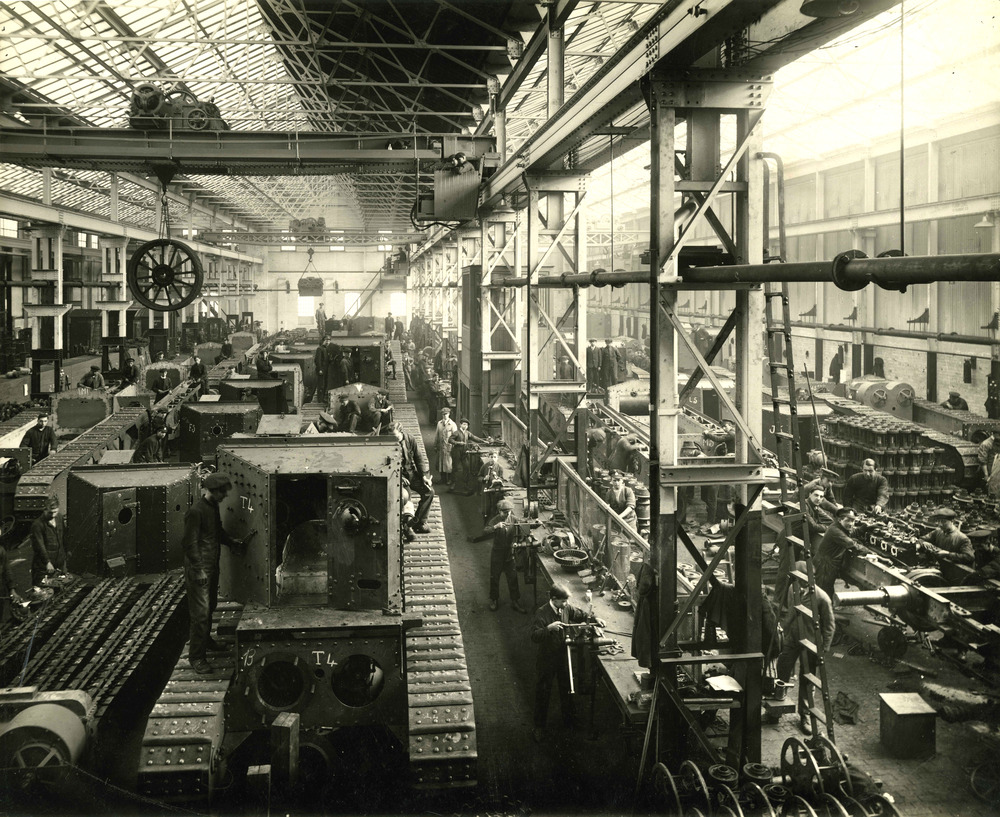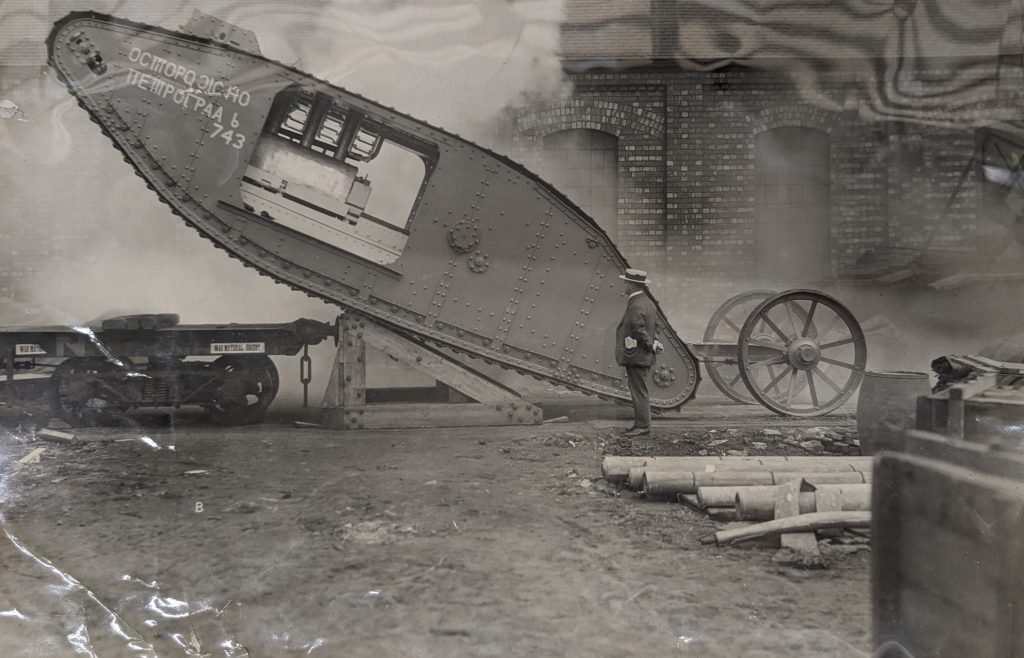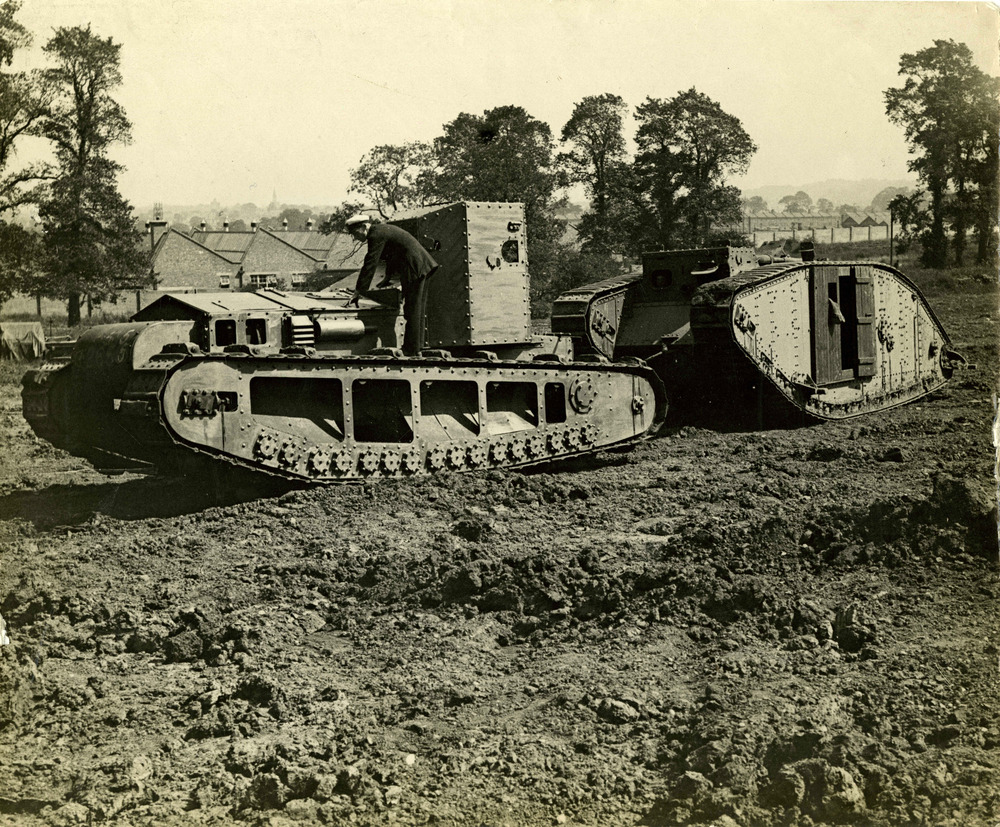By Gemma Hollman, Senior Archives Assistant, King’s College London Archives.
In 1962, the War Studies Department of King’s College London was founded by Sir Michael Howard, lecturer in Military Studies and one of England’s foremost military historians. Two years later, Howard established a Centre for Military Archives at King’s to complement the new department. The Centre’s remit was simple: it would collect the papers of senior defence personnel of the twentieth century. The official launch of this archive was timed for 1964, to commemorate the 50th anniversary of the outbreak of the First World War. In 1973, the archive was renamed the Liddell Hart Centre for Military Archives in honour of Sir Basil Liddell Hart, whose own extraordinary collection of over 1000 boxes of papers is still the single largest, and one of the most often used, in the LHCMA.
2024 thus marks the LHCMA’s 60th anniversary. In those intervening years we have gathered the personal papers of over 800 senior defence personnel, and we thought this birthday year was a great opportunity to showcase just some of the items from the collection. Every month this year we will be publishing a blog post spotlighting one item or collection chosen by a member of staff. We hope you enjoy celebrating with us!
When it came to choosing my military items to share, my mind immediately went to a fantastic collection of early tank photographs in our Stern collection. Lieutenant Colonel Sir Albert Stern served as Secretary to the Landships Committee of the Admiralty and War Office from 1915-1916 and then as Chairman of the Tank Supply Committee and Director of the Tank Supply Department, Ministry of Munitions from 1916-1917. The photographs are one of the first items I remember seeing when I started working here, and I was fascinated by them.
The tank, or landships as they were first known, was invented in the early days of the First World War. Based on the idea of armoured tractors, the caterpillar tracks were a way to traverse the difficult, muddy terrain of the front and these landships were to be a replacement for the previously widely-employed cavalry which was proving ineffective in the new world of trench warfare. The LHCMA holds papers of multiple senior military personnel who were involved in the development of the tank, but Stern’s collection of photographs are the most immediately eye-catching.
Stern’s photographs date back to the earliest days of development in 1915, including some of “Little Willie”, the first completed tank prototype in history. One of my favourite pictures is that of a “One-Ton Pedrail Machine”, labelled as being shown to Winston Churchill in 1915. It sits neatly on a lawn in what looks like someone’s back garden, and to me it perfectly exemplifies the experimentation that was going on. The photographs show all different types of experiments and tests of different machines, but there are also some really wonderful pictures of the workshops of William Foster and Company, Lincoln, and the Metropolitan Carriage, Wagon and Finance Company, Oldbury. Not only do these images give incredible insight into the early mass production of these machines, but they are also filled with surprisingly crisp faces of the factory workers, pulling you right in to the midst of this wartime production.
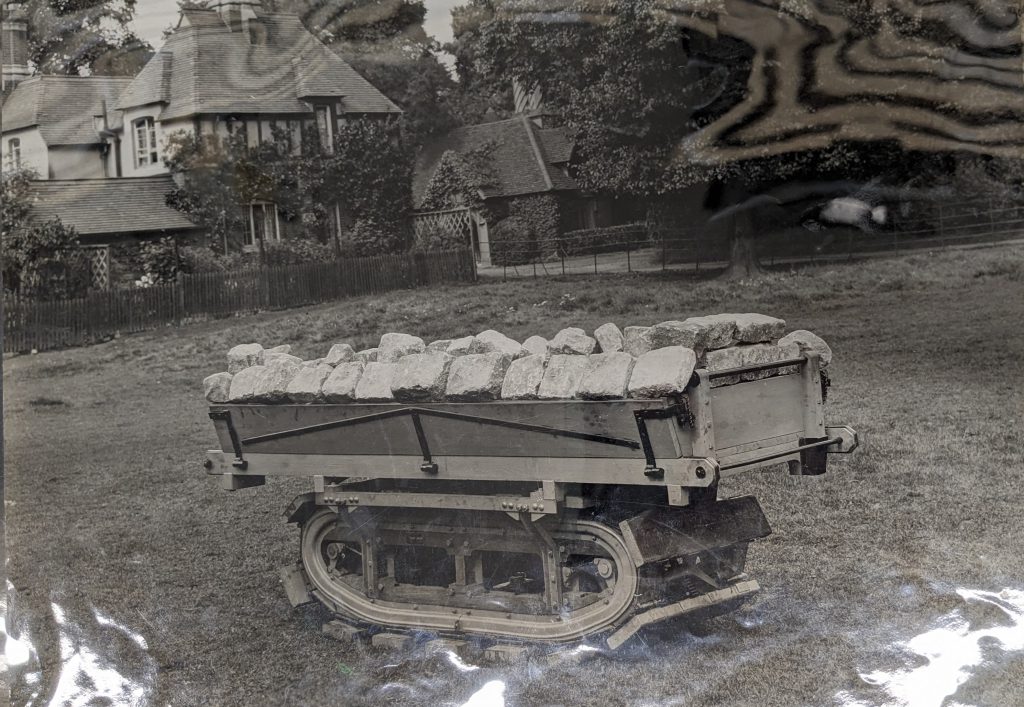
The first time that tanks were used in battle was during the Battle of the Somme, but it wasn’t until a year later at the Battle of Cambrai that their use saw its first great success. This gives a great example of the cross-over in our collections: the papers of Major General John Frederick Charles Fuller contain numerous accounts of Tank Corps battalions and operations summaries and reports. Within Fuller 1/5/4 is a report on the operations at Cambrai. The success of this usage may well have come in part from another of Fuller’s reports in 1/5/2 about the 2nd Brigade Tank Corps operations on the 7th June 1917. This volume goes into exquisite detail about the performance of the tanks, outlining a host of useful information to improve later performance and to ensure tanks were used in the right way. Two of the pages shown here discuss the difficult terrains the tanks struggled with in crossing the German trenches, what kind of rations the tank crews should receive, and how much time it would take a tank to reach its objective under various ground conditions.
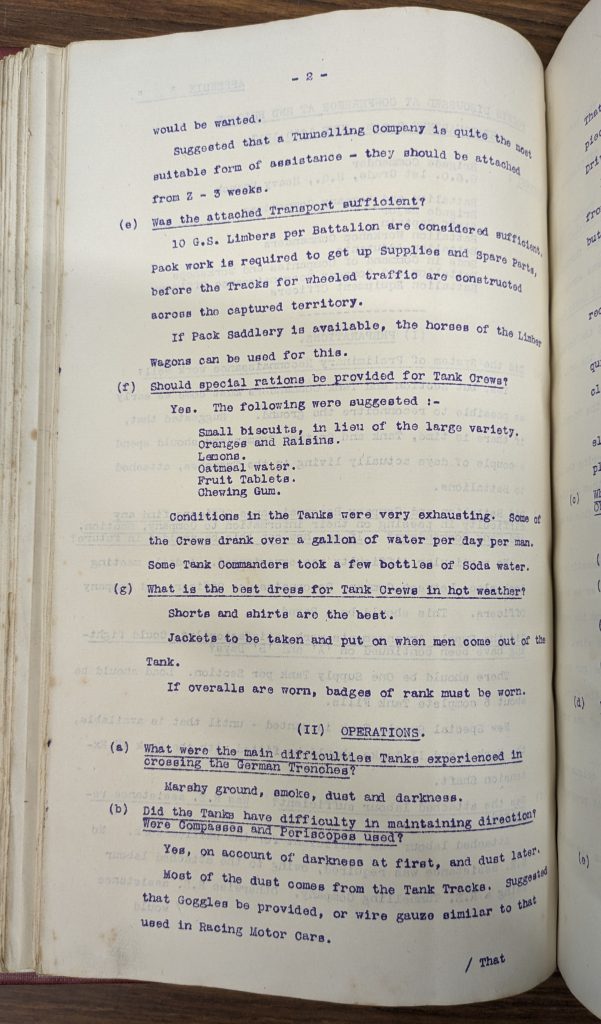
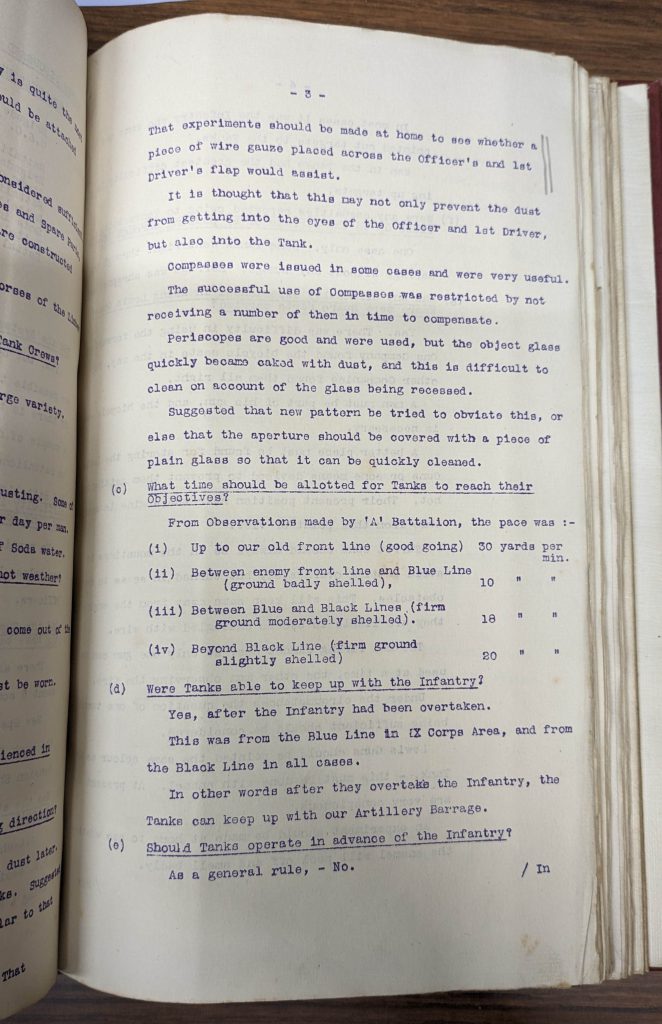
Photographs are so evocative to our connection to the past, and they are readily accessible to anybody, regardless of your extent of knowledge. They can reveal so much, especially when used in conjunction with paper sources. Finally, in researching this piece, a strange piece of serendipity occurred: whilst searching our original paper accessions register, recording the gifted collections which made the first boxes on the shelves of the Centre for Military Archives, we found something surprising. The very first collection on the list, Accession number 1? Stern’s collection on tanks. In the world of archives, things always seem to come full circle…
